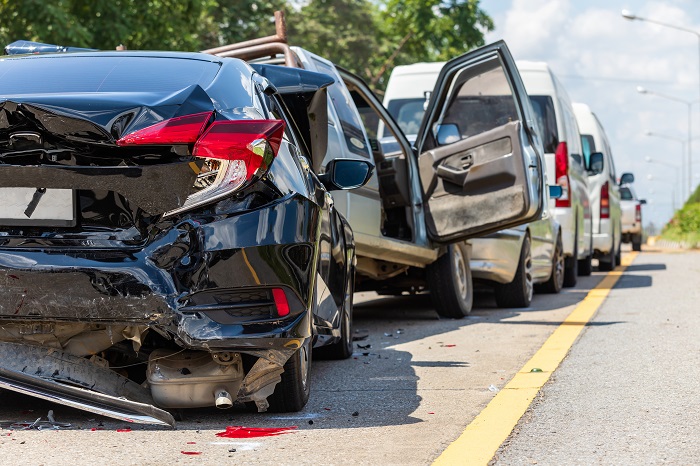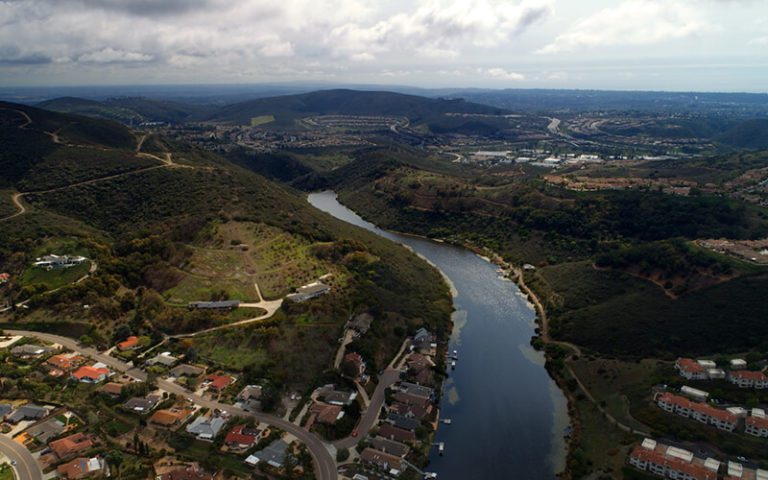A pile-up is a multi-vehicle accident. These types of accidents are among the most dangerous and deadly California car accidents. They can also be legally complex because of the difficulties involved in determining which driver was at fault for the accident.
If you’ve been in a five-car pile-up or multi-car accident of a different type, contact a California car accident attorney as soon as possible to help you navigate the insurance and legal issues involved.
Who Started the Chain Reaction?
The starting point for analyzing who is at fault in a 5-car pile-up or other multi-vehicle accident is to determine who started the chain reaction. The driver who started it is typically at fault for the entire pile-up, and legally responsible for the damage to all of the other vehicles and injuries to their occupants.
For example, in a multiple-car, rear-end collision (a common type of crash), the driver who initially rear-ended the other car because they were tailgating the vehicle in front of them would be at fault. In a 5-car pile-up, rear-end collision, this means the first driver will be responsible for the damage to all four other cars (and their occupants) even though they only actually had contact with the first car.
As another example, in a multi-vehicle highway accident caused by a large truck that flipped onto its side after turning too quickly, the truck driver will be at-fault and responsible for the damage to all of the other vehicles and their occupants.
Legal Responsibility May Be Shared
California multi-vehicle accidents sometimes involve more than one at-fault driver. For example, if a vehicle making a left turn (Car A) crashes into a car with the right of way coming from the opposite direction (Car B), Car A’s driver will be at fault. If, in the same example, a car behind Car B (Car C) was speeding and cannot stop and crashes into Car B, Car C will also be an at-fault driver.
In these types of multiple at-fault driver cases, the amounts a car accident victim can recover and from who involves joint and several liability and comparative fault.
- Joint and Several Liability. California recognizes the doctrine of joint and several liability, which provides that two or more parties may be held independently responsible for the full amount of economic damages suffered by a personal injury victim even if they were only partially responsible for the harm. For non-economic damages like pain and suffering, California law dictates that each party is only responsible for the number of damages commensurate with the percentage they were at fault.
- Comparative Fault. California is a pure comparative fault state, which means that even if a victim was partially at fault for their damages, they can still recover the amount someone else was at fault for from that other party. For example, if the personal injury victim in a multi-car accident was 40% at fault and other drivers were 60% at fault, the victim can still recover damages for the 60% they were not at fault.
Proving Fault in Multi-Vehicle Accidents
In a simple rear-end chain reaction accident, it is often relatively straightforward to establish who was at fault. However, other legal complexities may arise including insurance disputes that can make these seemingly simple cases more challenging.
In other types of multi-vehicle accidents establishing fault itself can be challenging, and is often contested since the personal and property damage involved in a multi-vehicle accident is typically substantial. In unclear cases, fault may need to be proven through accident reconstruction, witness testimony, security and traffic camera footage, photos from the scene, and other means.
Common examples of multi-car accidents where determining fault can be complex include:
- Merge Accident. Establishing which vehicle was at fault for an accident that occurs where there is a merge can be difficult. Typically, each driver points to the other, and objective evidence must be analyzed.
- Large Highway Pile-Up. Highway pile-ups can occur in the blink of an eye and involve dozens of vehicles, making establishing what happened and who was at fault very challenging.
- Any Disputed Accident. Anytime the parties dispute key parts of what happened leading up to the accident, proving fault can get complicated quickly in a multi-vehicle accident. There may be multiple drivers pointing their finger at other drivers creating a complex spiderweb of accusations and accounts of what happened that must be unwound with objective proof.
Pursuing Compensation for Multi-Vehicle Accidents
The top California car accident attorneys at Gomez Trial Attorneys are experienced in navigating the legal and factual complexities of multi-vehicle accidents. If you’ve been injured in a multi-vehicle accident, you may have a claim for compensation against the at-fault, or more at-fault, drivers. Contact us at(619) 237-3490 or here to schedule your free case evaluation.








